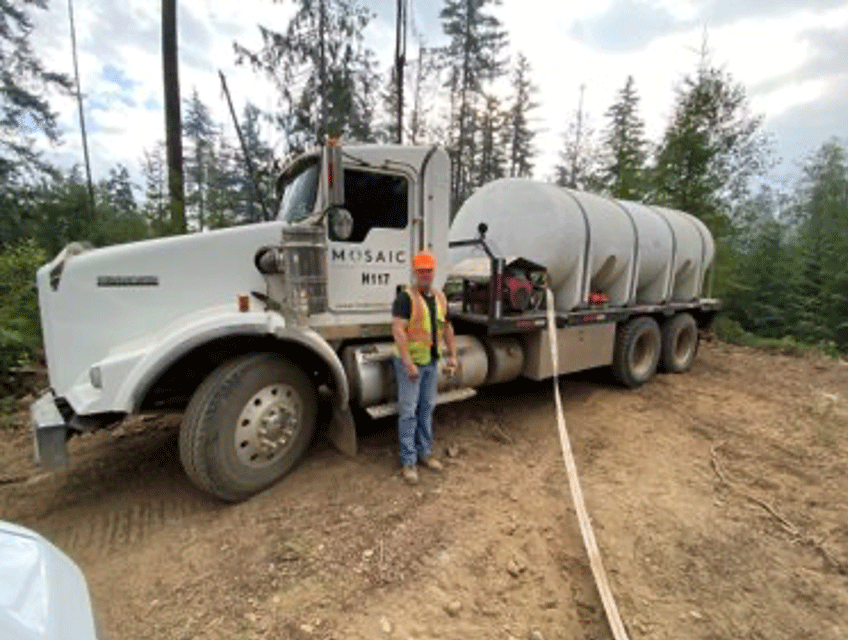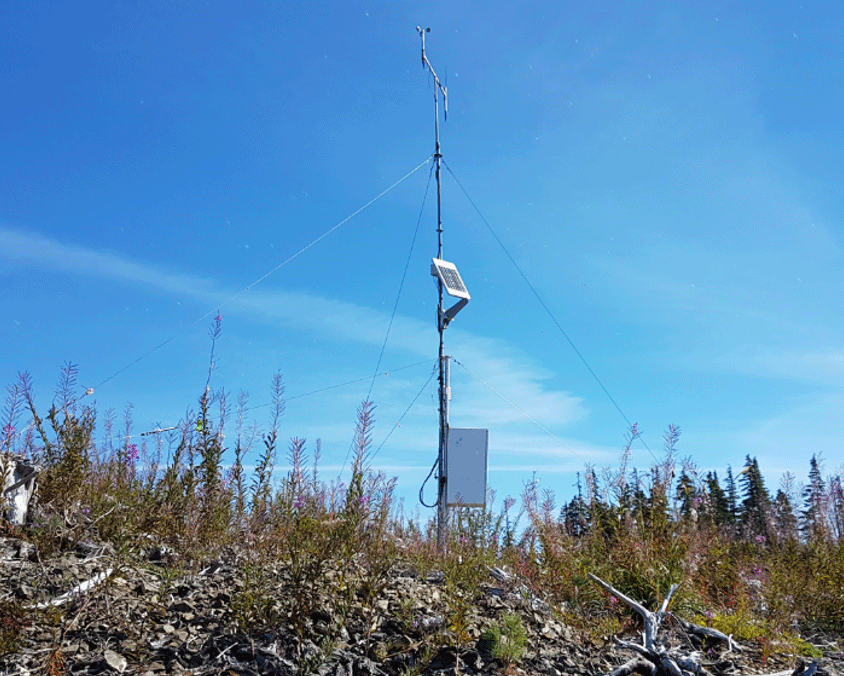Wildfire Prevention
Large-scale wildfire is catastrophic for our forest resources as it creates the instant release of large amounts of carbon dioxide, black carbon, brown carbon and ozone precursors into the atmosphere.
Preventing the loss of forest carbon into the atmosphere from wildfire is one of the most important things we can do to ensure our forest management has a net-positive climate impact.
At Mosaic, we undertake extensive measures to reduce the risk of wildfire, through proactive planning and response procedures which are activated when fires occur. Using weather data to guide our operations is key to fire prevention. We have installed remote, state-of-the-art weather stations across our operations, and we do our own monitoring and forecasting of fire risk. Recognizing that 70% of forest fires in our region are human caused, when weather data indicates fire risk is high or extreme, we have the ability to restrict access to our private forest lands to help minimize the chance of wildfire.
When a fire is detected, rapid response and coordination with the Coastal Fire Centre is critical for a successful control. Together with our contractors, we have invested in our own wildfire management capabilities to ensure the forests we manage are protected. In addition to formal coordination with the Provincial Wildfire Response program, Mosaic can also activate:
Crews trained in initial attack and forest fire fighting, serving as a critical first line of defence
Daily aerial and ground-based surveillance
Helicopter-based rapid attack
A fleet of 100 all-terrain fire trucks
Well stocked depots with pumps and hoses located across our lands
A Mosaic water tender used for wildfire response
A Mosaic weather station used to monitor and forecast wildfire risk
Fuel Management
Our fuel management program assesses and reduces the risk of wildfire in every harvested setting. We manage fuels in various ways, including through an intensive salvage program resulting in public and commercial firewood, pulp deliveries to local chippers, hog deliveries to local pulp mills, redistribution into the harvested setting, and lastly on-site burning as a last course of action. Burning residual fibre on site is the least climate-positive means of fuel management, and since 2018, we have reduced on-site burning by more than 29%.
We are committed to meeting the CleanBC target of near elimination of onsite burning by 2030 by improving our utilization and exploring alternate methods and markets.



